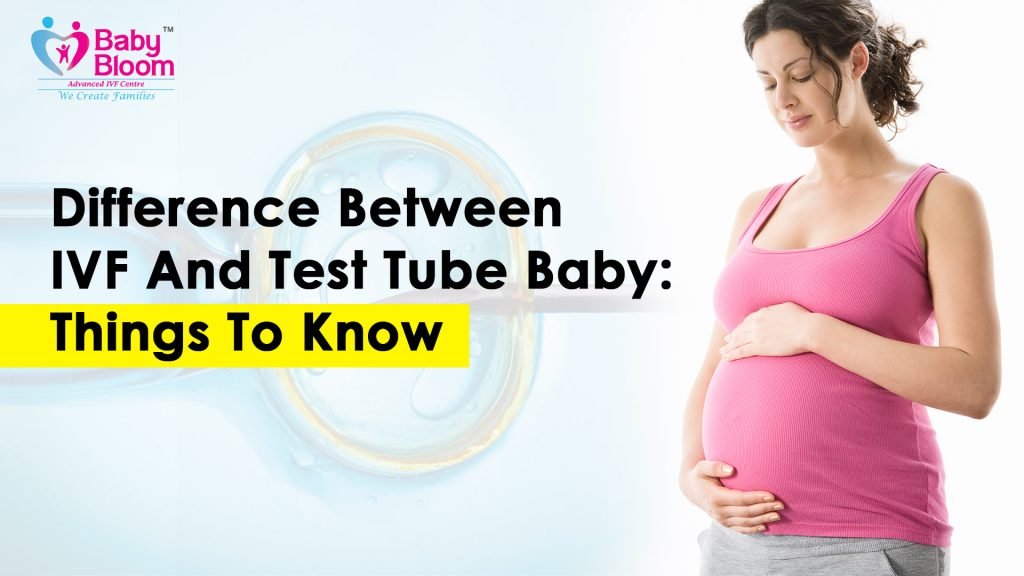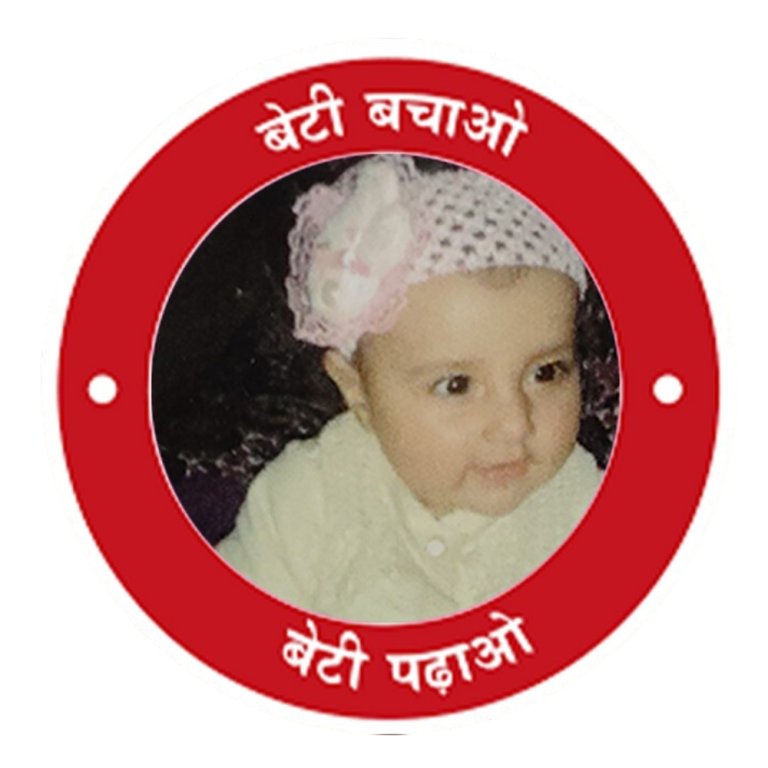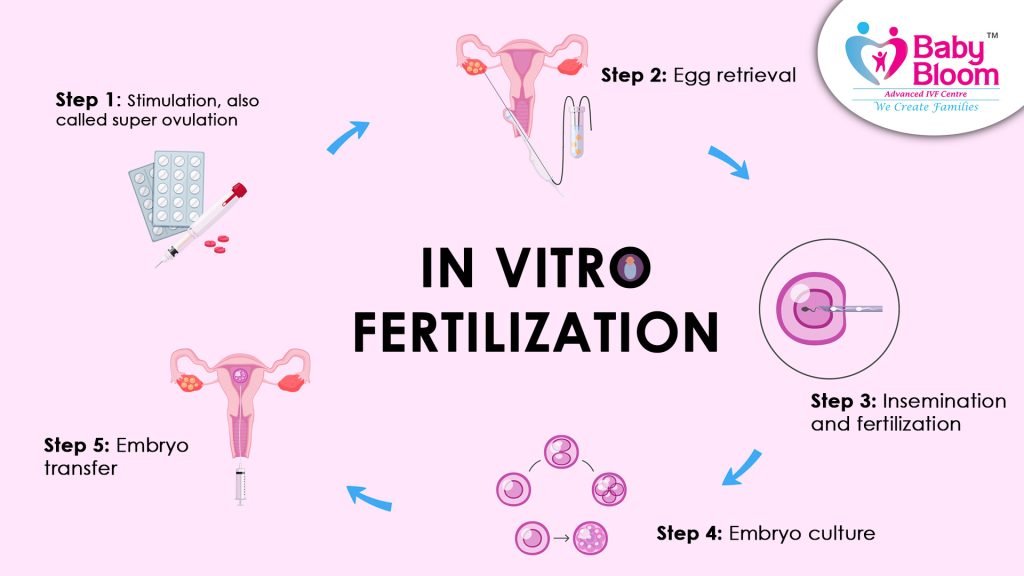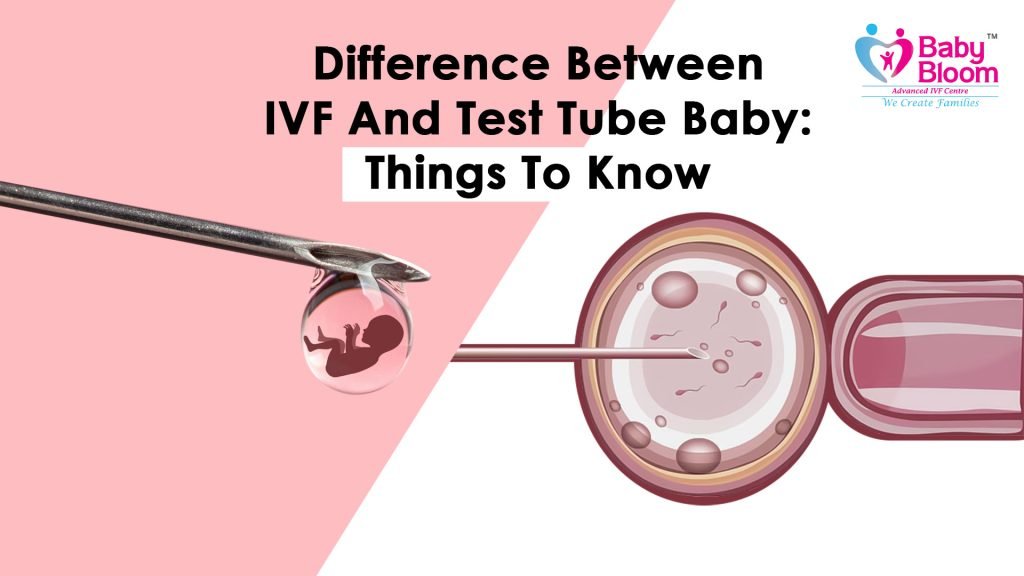Key Difference between IVF and Test Tube Baby: Things you should know

Dr. Pujil Gulati, IVF Specialist with over 13 years of experience in Assisted Reproductive Techniques BabyBloom IVF Gurgaon
Assisted reproductive technologies (ART) have changed the way infertility is treated, bringing hope to many couples facing difficulty in having a baby. In India, one common question is, “IVF kya hai?” as people seek options for starting a family. Two popular terms often used in ART are IVF and test tube baby. While they may seem similar, there are some differences. This guide will help you understand what sets them apart by explaining their process, success rate, risks, cost, and other important details in simple words.

What is IVF?
IVF, or In Vitro Fertilization, is a fertility treatment where a woman’s egg is fertilized with sperm outside the body in a lab. In Hindi, the full form of IVF means “(इन विट्रो फर्टिलाइजेशन).” It is a step-by-step process to help couples struggling with infertility. Here’s how it works:
1. Stimulation: Fertility medicines are given to the woman to help her ovaries produce multiple eggs.
2. Egg Retrieval: Once the eggs are mature, doctors collect them using a small needle in a minor surgical procedure.
3. Fertilization: In the lab, the eggs are mixed with sperm (from the partner or a donor) to fertilize them.
4. Embryo Transfer: After fertilization, the embryo is placed into the woman’s uterus using a thin tube through the cervix.
This treatment is often chosen by couples facing issues like blocked fallopian tubes, male infertility, older age, or unexplained infertility. Fertility medicines ensure proper egg development, and close monitoring increases the chances of success. Understanding the process and taking the right steps can help make IVF successful on the first try, giving hope to couples dreaming of starting a family.
Understanding Test Tube Baby
A test tube baby is a term used for a baby conceived through IVF (In Vitro Fertilization), where fertilization takes place outside the woman’s body in a lab dish or test tube. This technique was developed to help couples dealing with infertility fulfill their dream of becoming parents.
Many people misunderstand the term “test tube baby.” A common myth is that the baby is grown entirely in a test tube, which is not true. In reality, only the fertilization process happens in the lab. Once the egg is fertilized, the embryo is transferred into the woman’s uterus, where it grows naturally, just like in a regular pregnancy.
The phrase “test tube baby” became popular in the 20th century when IVF was first introduced. Over the years, IVF technology has improved significantly, resulting in higher success rates and healthier pregnancies. If you’re curious, you can explore more about the process, including “After Embryo Transfer Day by Day Symptoms,” to better understand the journey of IVF and test tube babies. Learn more about Test Tube Baby
The Key Differences
The terms IVF and test tube baby often cause confusion, but the main differences lie in terminology and advancements in technology:
- Terminology: “Test tube baby” is an older, informal term, while IVF (In Vitro Fertilization) is the modern and accurate name for the procedure.
- Procedure: Both refer to fertilizing an egg with sperm outside the body in a lab. However, “test tube baby” was used when the concept was new, while IVF describes today’s advanced techniques.
- Precision: IVF now uses cutting-edge technology for greater accuracy in fertilization, embryo selection, and implantation, increasing success rates significantly compared to earlier methods.
In short, IVF is the updated and refined version of what was once called the “test tube baby” process.
Advancements in IVF Technology
Modern advancements in IVF have significantly improved the success rates and safety of fertility treatments. Here are some key developments:
- Improved Embryo Selection: Advanced techniques help identify the healthiest embryos for transfer, increasing the chances of successful pregnancy.
- Enhanced Sperm and Egg Handling: Better tools and methods ensure higher-quality fertilization outcomes.
- Advanced Culture Media: Specialized solutions support embryo growth in the lab, mimicking natural conditions more effectively.
- Reduced Risks: Innovations in IVF reduce health risks for both mothers and babies, making the process safer.
- Increased Accessibility: With advancements, IVF has become more affordable and available to couples facing infertility challenges.
Overall, IVF represents the modern, sophisticated approach to assisted reproductive technology, replacing the outdated term “test tube babies” with safer and more precise methods
Success Rates and Effectiveness
IVF is generally more effective than traditional methods of conception, especially for couples facing infertility challenges. However, its success rates depend on several factors, such as:
- Age: Younger individuals typically have higher IVF success rates because egg quality and quantity decline with age.
- Fertility Issues: Conditions like blocked fallopian tubes or low sperm count can influence the chances of success. On average, studies show that IVF success rates range between 20% to 40% per cycle, with younger individuals and those with fewer fertility problems seeing better results. In comparison, natural conception may have lower success rates for couples dealing with infertility due to issues like irregular ovulation or sperm abnormalities.
To improve their chances, it’s crucial for individuals to consult the best IVF doctor in Gurgaon, who can assess their medical history and recommend the most suitable treatment plan tailored to their needs
Risks and Considerations
When considering IVF or test tube baby procedures, it’s essential to understand the potential risks involved:
- Multiple Pregnancies: IVF can increase the chances of twins or triplets, which may lead to complications for both the mother and babies.
- Ovarian Hyperstimulation Syndrome (OHSS): This occurs when hormone injections cause the ovaries to swell and become painful.
- Ectopic Pregnancy: There’s a risk that the fertilized egg may implant outside the uterus, which can be harmful to the mother.
Many people also wonder, “Is IVF painful?” While the process can cause some discomfort, most find it manageable. For instance:
- Egg Retrieval: Though performed under sedation, some women may feel cramping or pelvic discomfort afterward.
- Fertility Injections: These may lead to minor bruising or soreness at the injection site.
The motivation to achieve a successful pregnancy often outweighs these temporary discomforts. To make informed decisions, individuals should consult fertility specialists who can explain the risks, benefits, and tailor treatments to their medical history. Specialists can also advise on topics like the best sleeping positions after IVF, which may support better outcomes.
For further details, explore resources like ” (Pregnancy ke Lakshan)” to better understand the journey of conception and pregnancy
Cost Consideration
The cost of IVF or test tube baby procedures in India depends on several factors, such as the clinic, required procedures, and additional services. On average, a single IVF cycle costs between INR 1,00,000 to INR 2,50,000, covering consultations, medications, monitoring, and the procedure. However, extra services like pre-implantation genetic testing (PGT) or egg/sperm donation can increase the overall cost.
For couples with financial constraints, there are options to make treatment more affordable. Many of the best IVF centres in Gurgaon offer flexible payment plans or financing options, helping individuals spread the cost over time. It’s important to explore all financial assistance programs and compare clinics to find the most suitable and affordable solution for your needs. With careful planning, IVF can become accessible for those dreaming of starting a family.
Conclusion
Understanding the differences between IVF and the outdated term “test tube baby” is essential for making informed decisions about fertility treatments. Consulting fertility specialists is the first step toward understanding your options and choosing the best path for your reproductive health.
At Babybloom IVF Centre, we are committed to supporting individuals and couples on their fertility journey. From IVF to IUI and advanced options like PRP for infertility, we offer personalized care to meet your unique needs.
Take the first step toward your parenthood journey—contact us today for expert guidance and comprehensive treatment. Your reproductive health is our priority, and we’re here to assist you every step of the way.
Write your message:-

Welcome to BabyBloom IVF, where your journey to parenthood is nurtured with care, expertise, and the latest advancements in fertility treatment. Located in the heart of Gurgaon, Babybloom IVF is the Best IVF Centre in Gurgaon & leading fertility center dedicated to helping couples achieve their dreams of starting or growing their families.
Contact Us
Address No.1 I, block, 189, near Baani Square, South City II, Sector 50, (Gurgaon) Gurugram, Haryana 122018
Address No.2 Babybloom IVF, Nursing Home, Civil Rd, Company Bagh, Rohtak, Haryana 124001

Brought Happiness to the world
@BabyBloom IVF All Rights Reserved @2025



